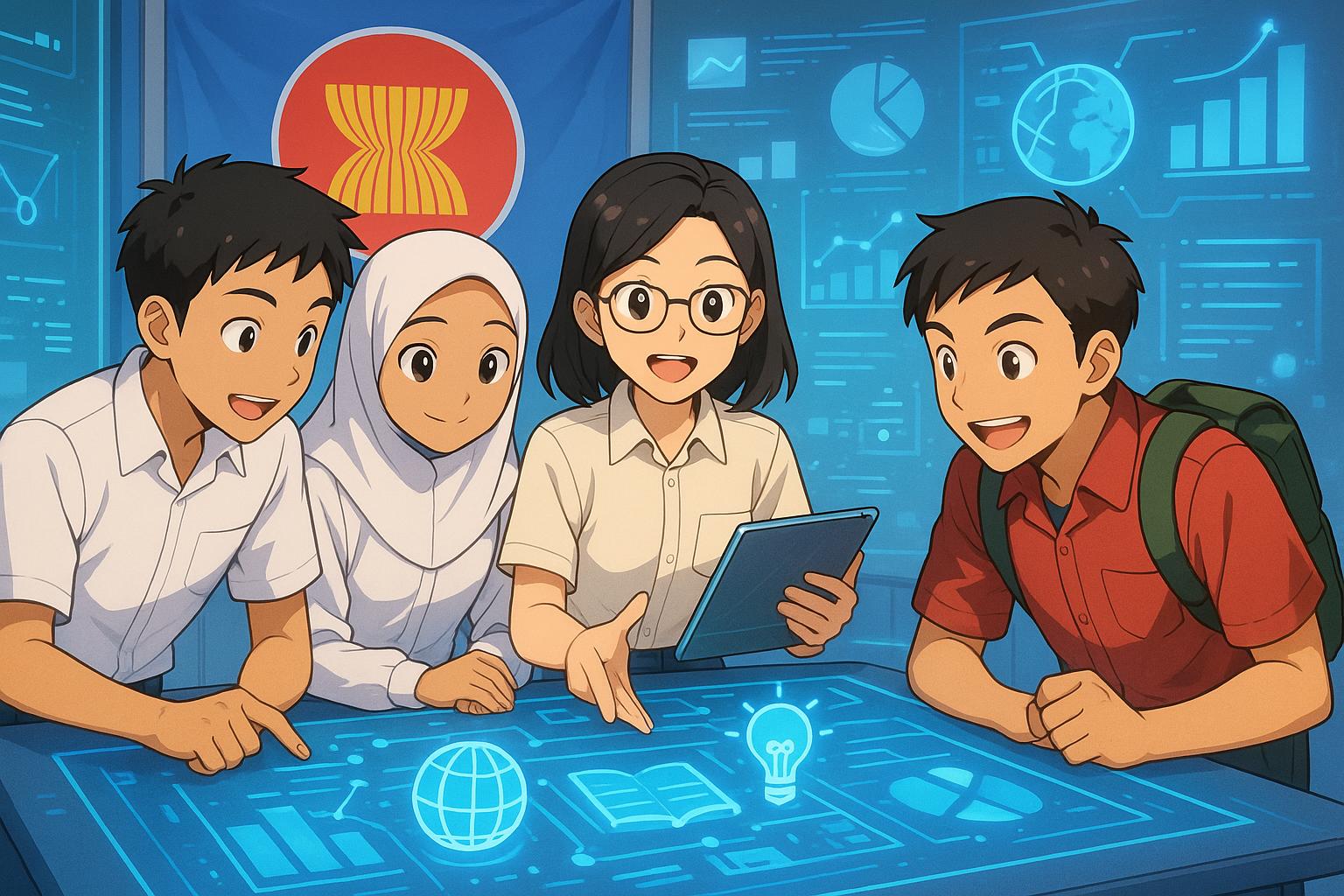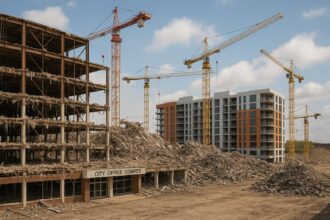The 46th ASEAN Summit in Malaysia has highlighted higher education’s pivotal role in harnessing the region’s youthful population to drive economic growth, foster regional integration, and address emerging global challenges through strategic policies and cross-border collaboration.
The recent 46th ASEAN Summit, hosted by Malaysia, has emerged as a significant milestone in efforts to foster regional synergy and address pressing global challenges. This pivotal meeting created a platform for leaders to navigate the complexities of geopolitical dynamics, emphasising the critical role of higher education and research in cultivating resilient human capital for future generations. As ASEAN grapples with uncertainties, the integration of education, research, and capacity-building initiatives is essential to harness the region’s youthful demographic and drive economic growth.
ASEAN’s burgeoning demographic trends present unique opportunities. With a median age of approximately 30 years, nearly 35% of the population falls within the 15 to 35 age bracket, representing a sizeable reservoir of potential talent. This demographic advantage, combined with an average annual GDP growth rate of 4% from 2014 to 2023, underscores the importance of strategic higher education policies that nurture a skilled workforce capable of meeting the evolving demands of various industries. According to the ASEAN Policy Forum on Higher Education, investments in quality, inclusive education are necessary to transform these demographic advantages into tangible economic benefits.
Under the stewardship of Prime Minister Anwar Ibrahim, Malaysia aims to foster deeper regional integration, evident in recent collaborations with China and the Gulf Cooperation Council (GCC). The trilateral alliance aims to enhance economic cooperation amidst global trade tensions, represented by a combined GDP of $25 trillion and a market of over 2 billion people. This context highlights how educational institutions can align their efforts to support broader economic objectives, helping to position ASEAN as a competitive player in the global arena.
Malaysia’s Universiti Malaya (UM), recognised as the country’s leading educational institution, is strategically placed to lead regional initiatives in human capital development. This university, steeped in rich historical and academic traditions, offers the potential to integrate regional values into its educational framework. The Prime Minister’s remarks during the summit resonated with this sentiment, emphasizing that even “a fragile bridge is better than a widening gulf” in the pursuit of peace and cooperation.
To seize the economic potential that the region offers, ASEAN must address existing disparities in tertiary education enrollment, which averages around 40.16% across member states. Initiatives such as the ASEAN Digital Masterplan 2025 and the ASEAN Declaration on Human Resources Development are vital for empowering educational institutions to adapt to the rapidly changing global landscape. These frameworks will guide the development of educational systems that not only prepare students for modern workforce demands but also promote lifelong learning.
Moreover, tackling critical issues such as energy transition and the rise of the digital economy must involve collaborative efforts between educational institutions, industry stakeholders, and government agencies. The digital economy in ASEAN is projected to reach USD 1 trillion by 2030, driven by sectors like e-commerce and fintech. This unprecedented growth necessitates a partnership approach, where universities become incubators of innovation, connecting students with mentors and fostering research that meets market needs. Multidisciplinary research programs focused on sustainable energy and technology will play a crucial role in creating a resilient socio-economic landscape.
The challenges facing higher education in ASEAN are echoed at various forums, including proposals from Malaysian Education Minister Fadhlina Sidek, who advocated for measures such as the establishment of an ASEAN Digital Skills Passport, enhancing cross-border internships, and standardising education frameworks. These initiatives underscore the collective aim of fostering a nimble, skilled workforce well-equipped to thrive in emerging sectors.
Ultimately, the ongoing transformation in ASEAN’s education sector is crucial not just for the region but also for addressing global challenges. As universities leverage their capacities and establish cross-border collaborations, they will contribute decisively to the formation of a skilled and adaptable workforce. This transformative journey is set to shape not only the futures of the member states but also the broader global community.
The 46th ASEAN Summit thus represents a watershed moment, as it not only articulates a vision for deeper integration and resilience but also underscores the profound implications of education on sustainable development and economic stability. With collective commitment and strategic foresight, ASEAN stands poised to harness its demographic dividends and ensure a brighter, more equitable future for all.
 Reference Map:
Reference Map:
- Paragraph 1 – [1], [4]
- Paragraph 2 – [1], [2], [5]
- Paragraph 3 – [3], [4]
- Paragraph 4 – [1], [2], [5], [6]
- Paragraph 5 – [2], [6], [7]
- Paragraph 6 – [4], [6]
- Paragraph 7 – [1], [3], [4]
- Paragraph 8 – [1], [2], [4], [5]
Source: Noah Wire Services
- https://www.businesstoday.com.my/2025/06/11/the-asean-summit-charts-the-future-for-the-worlds-new-generations/ – Please view link – unable to able to access data
- https://apnews.com/article/cb6a65eecbe619f8eb7c7a97a756e26c – On May 27, 2025, the Association of Southeast Asian Nations (ASEAN) convened a historic summit in Kuala Lumpur with China and the Gulf Cooperation Council (GCC) to enhance economic cooperation amid global trade tensions triggered by U.S. tariff hikes. Malaysian Prime Minister Anwar Ibrahim highlighted the potential of this trilateral alliance, representing a $25 trillion GDP and a market of over 2 billion people, to bolster resilience and connectivity. Chinese Premier Li Qiang emphasized China’s commitment to mutually beneficial collaboration, particularly noting China’s trade ties with ASEAN and its oil dependence on the GCC. ([apnews.com](https://apnews.com/article/cb6a65eecbe619f8eb7c7a97a756e26c?utm_source=openai))
- https://apnews.com/article/d1cec8cd62f787b1f7efa4c4fe7a0ad1 – The upcoming ASEAN summit in Malaysia, chaired by Malaysian Prime Minister Anwar Ibrahim, will focus on key regional issues such as the civil war in Myanmar, maritime disputes in the South China Sea, and recent U.S. tariff hikes affecting Southeast Asian economies. The meeting will be followed by a summit with Chinese Premier Li Qiang and leaders from the Gulf Cooperation Council comprising Bahrain, Kuwait, Oman, Qatar, Saudi Arabia, and the United Arab Emirates. ASEAN countries, many which rely on exports to the U.S., have been hit … ([apnews.com](https://apnews.com/article/d1cec8cd62f787b1f7efa4c4fe7a0ad1?utm_source=openai))
- https://theaseanmagazine.asean.org/article/transforming-the-future-of-education-in-asean/ – The ASEAN education sector is undergoing significant transformation to address future challenges. Initiatives include the ASEAN Digital Masterplan 2025, aiming to develop ASEAN as a leading digital community, and the ASEAN Declaration on Human Resources Development for the Changing World of Work, focusing on adapting to evolving workforce demands. The ASEAN Declaration on the Digital Transformation of Education Systems in ASEAN, adopted in 2022, marks a significant step in addressing global challenges and promoting lifelong learning. ([theaseanmagazine.asean.org](https://theaseanmagazine.asean.org/article/transforming-the-future-of-education-in-asean/?utm_source=openai))
- https://laopdr.un.org/en/283243-remarks-asean-policy-forum-higher-education-2024 – At the ASEAN Policy Forum on Higher Education 2024, the United Nations emphasized the need for quality, inclusive, and resilient education to accelerate progress on all Sustainable Development Goals (SDGs). The forum highlighted the importance of investments in quality higher education and evidence-based research, equitable access to education for all youth and adults, and improving the relevance of higher education to facilitate transitions to employment. ([laopdr.un.org](https://laopdr.un.org/en/283243-remarks-asean-policy-forum-higher-education-2024?utm_source=openai))
- https://www.malaymail.com/news/malaysia/2025/04/21/fadhlina-proposes-five-steps-to-revamp-asean-education-including-skills-passports-and-cross-border-internships/173888 – Malaysian Education Minister Fadhlina Sidek proposed five joint actions to future-proof ASEAN’s education landscape. These include establishing an education futures taskforce, creating an ASEAN Digital Skills Passport for cross-border skill recognition, developing the ASEAN Skills Mobility Corridor for internships and apprenticeships, standardizing early childhood education through a common framework, and setting up ASEAN Innovation Labs in schools to promote coding and problem-solving skills. ([malaymail.com](https://www.malaymail.com/news/malaysia/2025/04/21/fadhlina-proposes-five-steps-to-revamp-asean-education-including-skills-passports-and-cross-border-internships/173888?utm_source=openai))
- https://www.unesco.org/en/articles/asean-policy-forum-sets-stage-higher-education-transformation – The ASEAN Policy Forum on Higher Education, organized by UNESCO, aims to accelerate the transformation of higher education systems in ASEAN to be more inclusive and learner-centered, in line with Sustainable Development Goal Four (SDG 4) on quality education for all. The forum emphasized the importance of cross-regional cooperation in transforming ASEAN’s higher education landscape and highlighted the need for resilient, flexible, and inclusive higher education systems. ([unesco.org](https://www.unesco.org/en/articles/asean-policy-forum-sets-stage-higher-education-transformation?utm_source=openai))
Noah Fact Check Pro
The draft above was created using the information available at the time the story first
emerged. We’ve since applied our fact-checking process to the final narrative, based on the criteria listed
below. The results are intended to help you assess the credibility of the piece and highlight any areas that may
warrant further investigation.
Freshness check
Score:
8
Notes:
The narrative references the 46th ASEAN Summit held on May 26-27, 2025, and includes recent developments up to June 11, 2025. The earliest known publication date of similar content is May 27, 2025, with reports on the summit’s outcomes. The narrative incorporates updated data, such as Malaysia’s collaborations with China and the Gulf Cooperation Council, and initiatives like the ASEAN Digital Masterplan 2025. However, some content appears to be recycled from earlier reports, which may affect the freshness score. ([apnews.com](https://apnews.com/article/cb6a65eecbe619f8eb7c7a97a756e26c?utm_source=openai), [reuters.com](https://www.reuters.com/world/asia-pacific/asean-unveils-strategic-plan-integrate-its-economies-2025-05-27/?utm_source=openai))
Quotes check
Score:
7
Notes:
The narrative includes direct quotes attributed to Prime Minister Anwar Ibrahim, such as “a fragile bridge is better than a widening gulf.” This quote appears in earlier reports from May 27, 2025. The repetition of this quote suggests potential reuse of content. ([apnews.com](https://apnews.com/article/cb6a65eecbe619f8eb7c7a97a756e26c?utm_source=openai))
Source reliability
Score:
6
Notes:
The narrative originates from Business Today, a Malaysian news outlet. While it provides detailed coverage of the ASEAN Summit, the outlet’s reputation and credibility are not widely established, which may affect the reliability score.
Plausability check
Score:
8
Notes:
The narrative discusses plausible developments, such as Malaysia’s collaborations with China and the Gulf Cooperation Council, and initiatives like the ASEAN Digital Masterplan 2025. These align with recent reports on the summit’s outcomes. ([apnews.com](https://apnews.com/article/cb6a65eecbe619f8eb7c7a97a756e26c?utm_source=openai), [reuters.com](https://www.reuters.com/world/asia-pacific/asean-unveils-strategic-plan-integrate-its-economies-2025-05-27/?utm_source=openai)) However, the repetition of certain quotes and the recycling of earlier content may raise questions about the originality of the narrative.
Overall assessment
Verdict (FAIL, OPEN, PASS): OPEN
Confidence (LOW, MEDIUM, HIGH): MEDIUM
Summary:
The narrative provides a comprehensive overview of the 46th ASEAN Summit and its implications for the region’s future. While it incorporates recent developments and updates, the repetition of certain quotes and the recycling of earlier content suggest potential issues with originality. The source’s reliability is also a concern due to the outlet’s limited reputation. Therefore, further verification from more established sources is recommended to confirm the accuracy and originality of the information presented.













